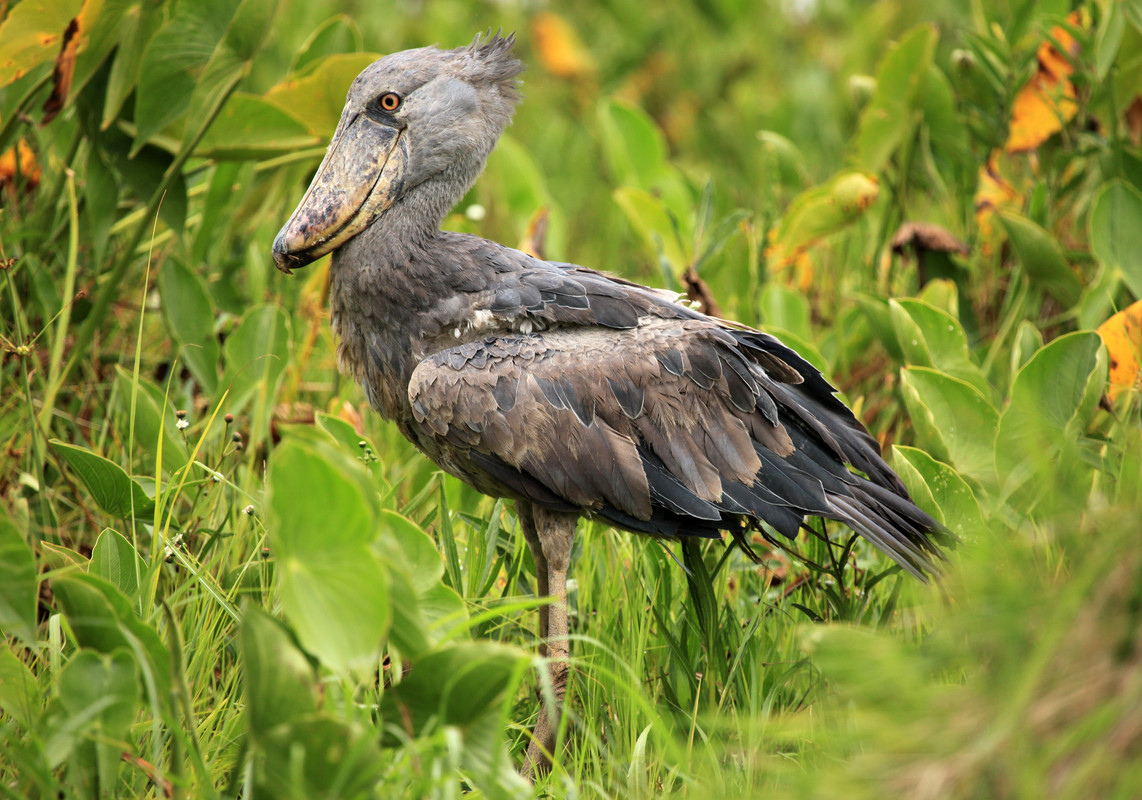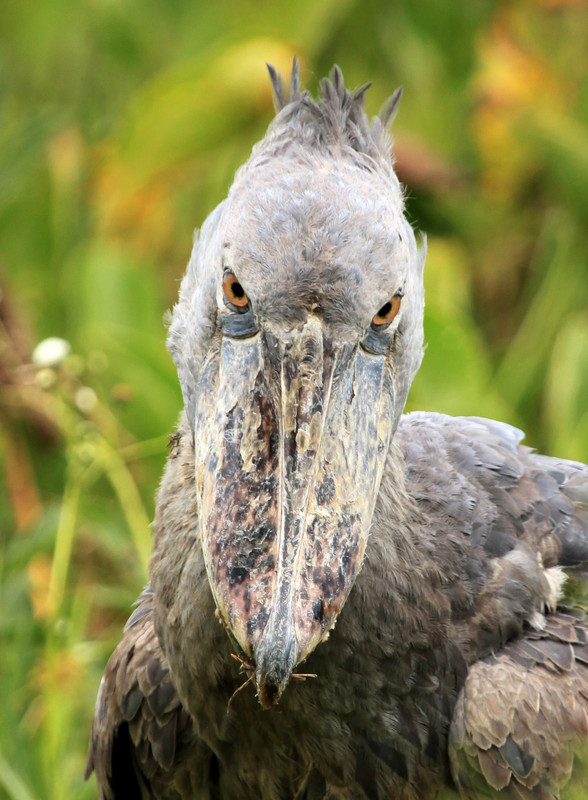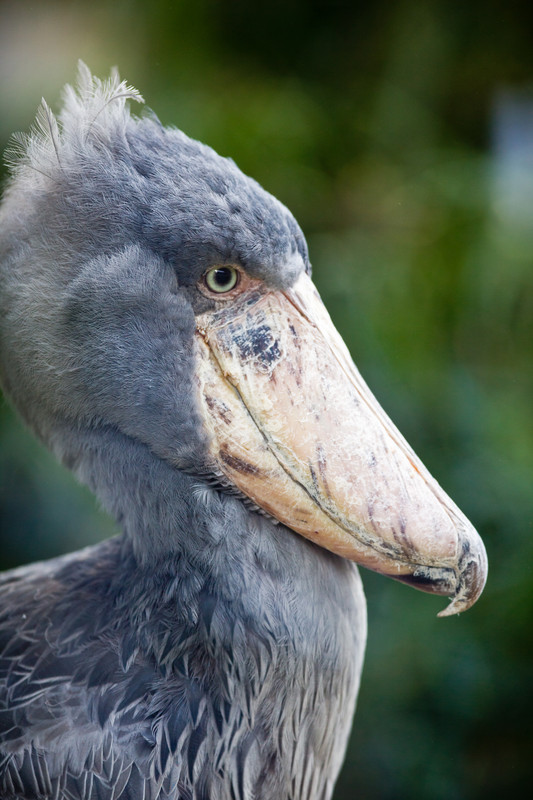
In the quiet heart of Africa’s wetlands stands a bird that looks carved from deep time: the Shoebill (Balaeniceps rex). Slate gray, statuesque, and patient beyond belief, it waits among papyrus reeds until a ripple betrays a hidden lungfish. Then—one precise surge—and stillness returns. This is slow cinema written in water and light.

Neither true stork nor heron, the Shoebill is the sole living member of its family Balaenicipitidae. Adults stand 110–140 cm tall with a wingspan reaching ~230–260 cm. The famous shoe-shaped bill is both scoop and clamp, tipped with a sharp hook to secure slippery fish.

Range & Habitat
Shoebills live in papyrus swamps, floodplains, and slow, shallow wetlands with floating vegetation and clear channels. Key strongholds include Uganda (Albert Nile and Lake Victoria basin), South Sudan, western Ethiopia, Rwanda, parts of the DR Congo, and Tanzania. Seclusion and undisturbed reed beds are essential—for hunting and for nesting.

Diet & Behavior
Specialists in lungfish, the birds also take catfish, tilapia, frogs, and small reptiles. The method is pure patience: hold still for minutes, sometimes longer; strike once with decisive power; drain the bill; swallow. Bill-clattering is their signature sound, especially during pair greetings.

Breeding
Nests are built on floating vegetation or low platforms hidden inside dense reeds. Clutches are typically one to three eggs, though sibling rivalry means only one chick often fledges. Parents shade the nest and carry water in their bills to cool eggs and chicks during heat.

Conservation
Status: Vulnerable (IUCN). Threats include wetland drainage, agricultural expansion, disturbance, and illegal trade. The most effective safeguards are community-based wetland protection, responsible guiding with respectful viewing distance, and cross-border habitat management.
💙 Unwind with long, gentle nature films. Space Chill curates 4K wildlife and landscapes with soft ambient music—perfect for study, focus, or sleep.
👉 Watch & subscribe here: @SpaceChillOfficial
Quick facts
- Scientific name: Balaeniceps rex
- Height: 110–140 cm · Wingspan: ~230–260 cm · Weight: ~4–7 kg
- Diet: Lungfish, catfish, tilapia; frogs and small reptiles
- Range: Wetlands of Uganda, South Sudan, western Ethiopia, Rwanda, DR Congo, Tanzania
- Not a true stork; sole member of family Balaenicipitidae
Hashtags
#Shoebill #BalaenicepsRex #UgandaWildlife #NatureRelaxation #CinematicNature #4KNature #PeacefulWatching #SlowCinema #AmbientNature #SpaceChill

0 Comments